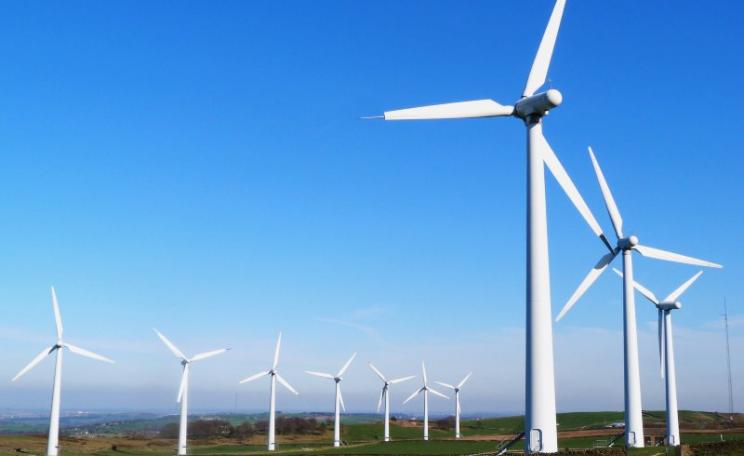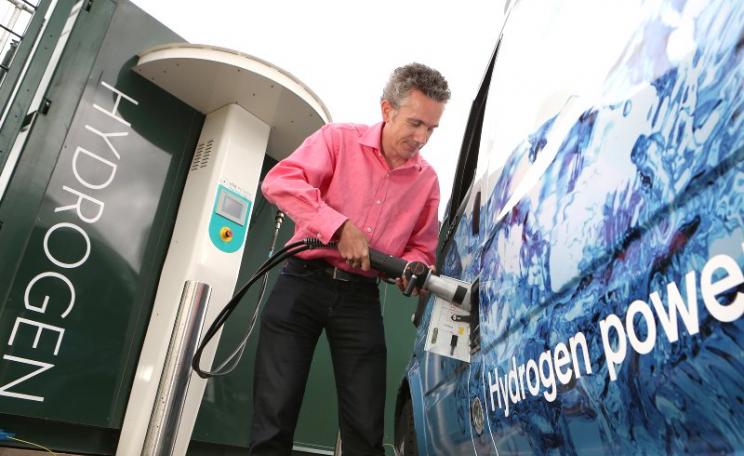In places as diverse as Chile, Abu Dhabi, parts of India or the islands of Hawai'i, recent auctions for new electricity generation capacity have demonstrated that solar can beat fossil fuels on price - no subsidy or special favours required.
Towards the end of last year, Shell CEO Ben van Beurden made a little-noticed remark. He said that solar would become the "dominant backbone" of the world's energy system.
He didn't give a date for his prediction, or indeed define what 'dominant' means, but he accepted that the sun will eventually provide the cheapest energy source across almost all of the world.
This is what my new book, The Switch, is about. Just how long will it take to wean the world off fossil fuels using just the forces of the free market rather than quixotic governments? What technologies will we need to complement the intermittent power of the sun?
In some ways, van Beurden's thought is an obvious one. The light and heat coming from the sun provides a continuous stream of about 90,000 terawatts of energy to the planet. (Don't worry about the unit of measurement. The important thing is that this number is six thousand times the requirements of the entire world).
Energy needs will rise - probably doubling in the next 30 years - but even then we will only need to capture three hours' worth of sunshine to provide everybody around the world with as much energy as they need every year.
For comparison, the power of the wind averages less than 1,000 terawatts, or two orders of magnitude less than solar energy. Wind is more difficult to collect and tends to blow far from centres of population. All other potential sources of renewable energy are smaller still, usually by factors of ten or one hundred.
Solar is already beating fossil fuels on price
Solar is also cheap, and getting cheaper every month. The price reduction has been steep and surprisingly consistent. Panels are being produced today for about one three hundredth - 0.3% - of the cost in the mid-1970s.
These cost reductions have been principally driven by the yearly increases in the volumes produced; since the commercialisation of photovoltaic panels began half a century ago the number of panels produced has grown by an average of about 40% a year. Solar installations continue to grow, now principally in China, India and other industrialising countries, and the volumes of panels installed continues to grow year after year, helping drive costs even lower.
In many parts of the world solar power is already the cheapest way of delivering electricity. In places as diverse as Chile, Abu Dhabi, parts of India or the islands of Hawai'i, recent auctions for new electricity generation capacity have demonstrated that photovoltaics can beat fossil fuels on price - no subsidy or special favours required.
As cost reductions continue, solar's price advantage will spread almost everywhere around the globe. In remote mining settlements, villages in Kenya and rooftops in California PV is already being installed without a thought of alternatives. It is already, in van Beurden's words, the backbone of energy supply in many locations.
Research scientists around the world are continuing to invent new ways of turning light into electricity using simpler and cheaper materials. In the book I talk to several technologists who are pioneering the next generation of solar panels. These will be incorporated in the glass of windows or hung on the outside of buildings.
In places as diverse as Chile, Abu Dhabi, parts of India or the islands of Hawai'i, recent auctions for new electricity generation capacity have demonstrated that solar can beat fossil fuels on price - no subsidy or special favours required.
Innovation in collecting energy from the sun at lower and lower cost has at least another half century of progress to come.
And this is only the beginning ...
One of the things that most surprised me in the research for the book was how people in countries like Nigeria, where the electricity grid doesn't come close to half the population, see solar photovoltaics as democratising and accessible.
The analogy in their minds is the arrival of the mobile phone. Fifteen years ago the fixed line phone network was struggling to expand and only reached a few percent of the people in Nigeria. Then the mobile arrived and now almost everybody has a phone, rich and poor.
Unsurprisingly, hopes are high in countries like this that photovoltaics will grow in a similarly explosive fashion, providing power to everybody, usually via small 'microgrids' rather than a hugely expensive national network.
For the nearly 50% of the world's population living in the tropics, overnight needs for energy will be provided by large commercial batteries which have stored electricity from the day. Like photovoltaics, these batteries are also getting cheaper by the month. Over the last five years, prices have tumbled at least 75% and these reductions look set to continue into the indefinite future.
As with photovoltaic panels the growing volume of batteries being produced, increasingly for electric cars, is helping drive costs down to levels thought unachievable even a few years ago.
Alongside batteries, minute-by-minute variations in solar output can be managed by using appliances that can adjust their power requirements to match the availability of power. Almost every machine in the home, office and factory - including air conditioning systems, refrigerators, pumps and heaters - can be easily modified to vary its use of electricity on a signal from the energy supplier.
Other electricity generation technologies can complement solar at night. The sun's daytime heat can be stored in molten salt and used to turn turbines when the sun is down. Cheaper and lighter wind turbines are becoming available. Anaerobic digestion of biomass is also seeing huge advances around the world and can be engineered to produce power only at night.
New solutions for high latitude countries - like the UK
Of course we in the UK know that solar is not enough, even with batteries, wind power and demand that responds to the scarcity of power. We northern Europeans are unrepresentative, of course, because less than 10% of the world's population lives north of London. But the UK needs energy in winter when the sun doesn't shine and the backup of wind power isn't available.
The answer to our needs is to convert surplus power in the summer and during winter gales into easily storable liquid fuels and gases. These can then be burnt to make electricity on dark, still days.
Companies like Electrochaea in Germany are showing the way. Electrochaea makes hydrogen using simple electrolysis of water and then uses the hydrogen along with waste carbon dioxide from sewage farms. An ancient microbe 'eats' the two gases and exudes 100% methane, the main constituent of natural gas. This is a completely green fuel since its carbon atoms come from biological sources.
Other companies in the US and elsewhere are showing us how to take CO2 and process it to make oils for transportation. These processes require large amounts of energy but as solar power becomes cheaper, this is increasingly less of an obstacle.
Bill Gates recently wrote that he is optimistic that the world will solve the energy problem soon. In The Switch I try to show that his optimism is more than justified. In fact, the outlines of the route to abandoning fossil fuel energy around the world are already here.
Low cost photovoltaics, electricity storage and technologies that turn surplus summer power into green gases and oils will give all 9 billion people on the planet a secure supply of energy faster than we thought possible.
The book: 'The Switch' is written and researched by Chris Goodall and published by Profile Books.
Special offer for readers of The Ecologist: Enter the discount code SWITCHECO at the checkout on Profile Books' web site to buy the book at £7.99 including postage and packing, a price lower than currently available at the main online booksellers.
Chris Goodall is an expert on energy, environment and climate change, and a frequent contributor to The Ecologist. He blogs at Carbon Commentary.







